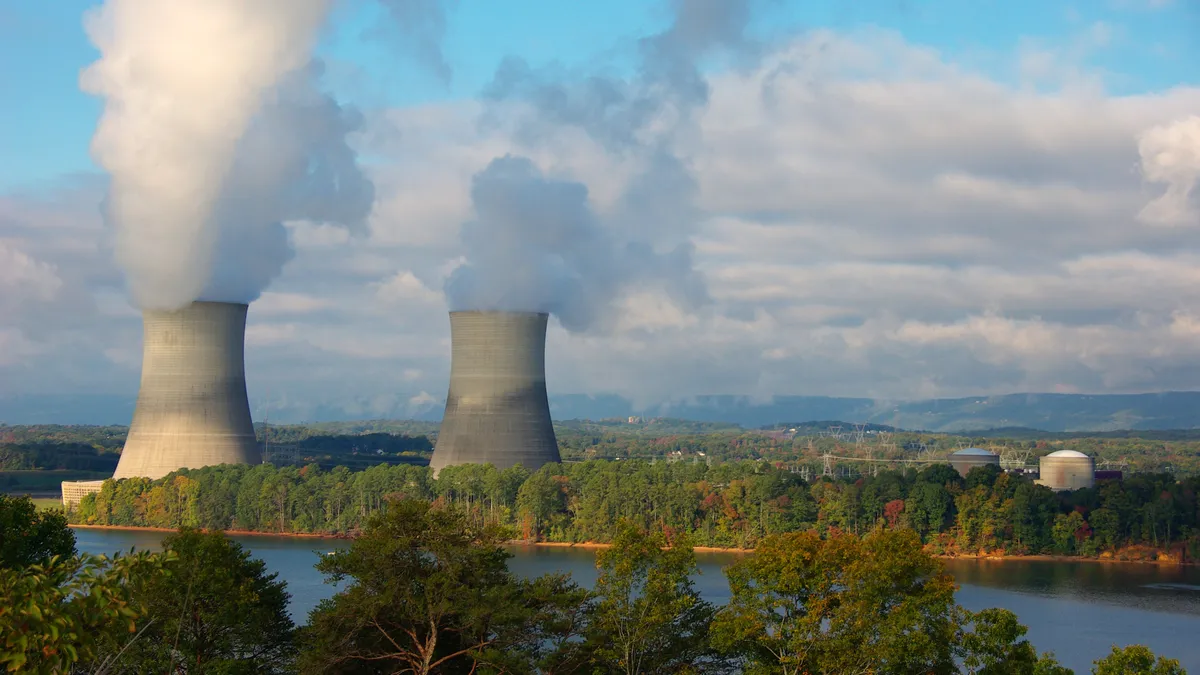Dive Brief:
- Nuclear capacity in the United States will decline over the next three decades, according to the U.S. Energy Information Administration, even accounting for plant closures currently on the books.
- The EIA's reference case assumes that about 25% of currently-operating nuclear capacity will be removed from service by 2050.
- The nation's nuclear fleet is getting older—the plants supply about 20% of the United States' generation but almost all of them first came online between 1970 and 1990.
Dive Insight:
Nuclear energy is reliable and its generation produces no carbon emissions, but EIA says the long-term outlook for the industry is dim.
The plants "make up a disproportionately large share of generation compared with their share of electricity generating capacity," EIA said in a research note. As more nuclear capacity is retired and gas-fired and renewable generation rises, the agency predicts the nuclear share of the U.S. electricity generation mix will decline from 20% in 2016 to 11% in 2050.
Through 2050, EIA counts 9.1 GW of nuclear capacity coming online, including the V.C. Summer project in South Carolina and the Vogtle facility in Georgia. However, progress on those projects has put in doubt due to Westinghouse Electric's recent bankruptcy.
Westinghouse, the nuclear development subsidiary of Toshiba, filed for Chapter 11 bankruptcy court protection in March, casting significant doubt into the industry. The company's Vogtle and V.C. Summer projects are largely to blame for the company's financial issue: both plants are years behind schedule and billions over budget.
Earlier this year, EIA's most recent long-term projections indicated renewable energy and natural gas will likely continue to grow, and the United States is expected to become a net energy exporter sometime in the next decade.
The agency said it expects almost 70 GW of new wind and solar capacity will be added by 2021, helped by declining capital costs and tax credits. After 2030, new capacity will be split primarily between solar and natural gas, with solar capacity representing more than 50% of new capacity additions through 2040.
EIA believes low natural gas prices, higher renewable energy penetration, stagnant load growth, and relatively high capital costs, are all hampering the growth of nuclear generation.















